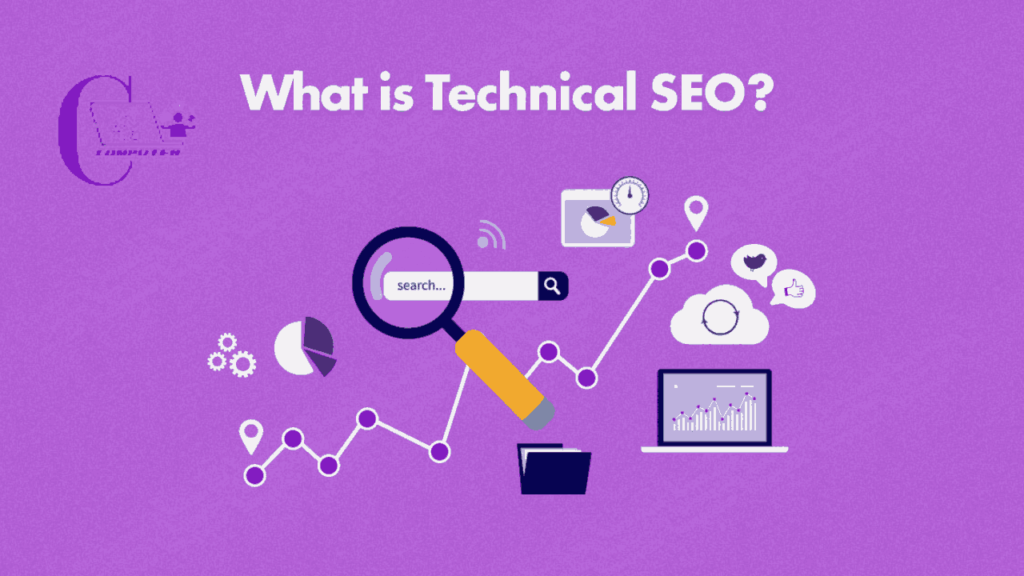What is PeoplePerHour?
Introduction
PeoplePerHour is a global freelance marketplace connecting businesses of all sizes with skilled freelancers across various industries. Think of it as an online hub where you can hire writers, developers, designers, marketers, and more for projects on an hourly or fixed-price basis. Founded in 2007, PeoplePerHour boasts a diverse talent pool and secure escrow system, aiming to streamline the hiring process and provide flexible work opportunities for freelancers worldwide.
Now let us understand what are the advantages of "PeoplePerHour" as of today.
In today’s fast-paced life, people are very worried about finding work as per their skills. They are not getting work as per their requirement anywhere. If they are getting it then they are not getting the right value. As you all know, in today’s era people are earning a lot of money through freelancing but many people do not know the platform, so today I am going to tell you about a new platform where you can work according to your skills. You can search whether you have the skills of digital marketing or graphics or anything else, here you will get all the skills.
What it means: A diverse talent pool on PeoplePerHour signifies a platform offering freelancers from various backgrounds, experiences, and skillsets. This diversity can encompass:
- Demographics: Age, gender, ethnicity, nationality, etc.
- Industries: From writing and graphic design to programming and marketing, covering a wide range of professional fields.
- Experience: Beginners, seasoned professionals, and everything in between.
- Work styles: Freelancers who prefer individual work, collaboration, or specific communication styles.
- Skills and specializations: Niche expertise within broader categories, catering to unique project needs.
Crafting a Winning Profile
Creating a strong profile on PeoplePerHour is essential for attracting clients and landing projects. Here are some key tips:
Profile Essentials:
- Professional photo: Use a clear, head-and-shoulders photo that portrays you professionally.
- Compelling headline: Clearly communicate your skills and value proposition in a few words.
- Detailed description: Outline your experience, skills, and achievements, tailored to your target audience.
- Relevant skills: Add relevant skills and keywords for better searchability.
- Experience: Showcase your professional background, highlight notable projects, and quantify your achievements.
- Client testimonials: Include positive feedback from past clients (with permission) to build trust.
- Portfolio: Showcase your best work through visual samples, links, or written descriptions.
- Hourly rate: Set a competitive and realistic hourly rate based on your experience and skill level.
- Availability: Indicate your availability and preferred work style (remote, on-site, etc.).
Pro Tips:
- Focus on your ideal client: Tailor your profile to the type of clients you want to attract.
- Keywords: Use relevant keywords throughout your profile to improve search ranking.
- Proofread carefully: Ensure your profile is free of typos and grammatical errors.
- Regularly update: Keep your profile updated with new skills, experience, and portfolio pieces.
- Engage with the platform: Participate in forums, discussions, and other community activities to increase visibility.
- Be responsive: Promptly respond to client inquiries and messages.
- Go the extra mile: Offer free consultations or samples to showcase your expertise.
By following these tips and utilizing the available resources, you can create a profile that attracts clients and helps you achieve success on PeoplePerHour.
Remember, it’s a continuous process, so keep optimizing your profile based on your experience and feedback. Don’t hesitate to ask me if you have any further questions!
Showcasing Portfolio Excellence
When it comes to showcasing your portfolio excellence on PeoplePerHour, the key lies in presenting your work in a way that resonates with your target audience and effectively demonstrates your skills and value proposition. Here are some key strategies to keep in mind:
Choose the Right Pieces:
- Quality over quantity: Prioritize your best work that represents your skills and target audience.
- Variety is key: Showcase different types of projects to demonstrate your versatility.
- Focus on results: Highlight the impact of your work through project descriptions and data (e.g., increased website traffic, improved conversion rates).
- Tailor your selection: Adjust your portfolio based on the type of projects you’re applying for.
Presentation Matters:
- Visual appeal: Use high-quality visuals like screenshots, mockups, or videos to capture attention.
- Clarity and organization: Present your work in a clear and organized manner, making it easy for clients to navigate and understand.
- Case studies: Include detailed case studies for complex projects, showcasing your problem-solving approach and results.
- Storytelling: Weave a narrative around your work, explaining the challenges faced and the solutions provided.
Leverage Platform Features:
- Portfolio section: Utilize PeoplePerHour’s dedicated portfolio section to upload your best work.
- Project proposals: Attach relevant portfolio pieces to your proposals to enhance your application.
- Gallery links: If your portfolio is hosted elsewhere, include links to its online location.
- Client testimonials: Incorporate positive client feedback alongside your portfolio pieces to build trust.
Your portfolio is an essential marketing tool for attracting clients. By carefully selecting and presenting your best work, you can effectively showcase your expertise and land your dream projects on PeoplePerHour.
Navigating the Job Marketplace
Navigating the job marketplace on PeoplePerHour requires both strategic planning and proactive engagement. Here are some key tips to help you succeed:
Before Diving In:
- Self-Assessment: Define your skills, experience, and desired work style (remote, on-site, etc.). Research average rates for your field and choose a competitive yet realistic hourly rate.
- Target Audience: Identify your ideal clients (industries, project types, budgets) and tailor your profile and proposals accordingly.
Profile Optimization:
- Compelling & Informative: Craft a clear and concise headline, detailed description, and relevant skills that grab clients’ attention. Showcase achievements and use keywords for searchability.
- Visual Appeal: Choose a professional headshot and curate a portfolio that highlights your best work through visuals, links, or descriptions.
- Social Proof: Include positive client testimonials with permission to build trust and credibility.
Finding Projects:
- Search Effectively: Use relevant keywords and filters to find projects aligned with your skills and interests. Browse categories and explore new opportunities beyond your immediate scope.
- Be Proactive: Save searches, set up job alerts, and actively reach out to clients with personalized proposals demonstrating your understanding of their needs.
- Stand Out: Write clear, concise, and engaging proposals that address the specific project requirements and highlight your unique value proposition.
Landing Projects:
- Respond Promptly: Be quick to answer client inquiries and messages, demonstrating professionalism and interest.
- Negotiate Confidently: Be prepared to negotiate your rate based on your expertise and the project scope. Don’t undersell yourself, but present your value clearly.
- Deliver Excellence: Exceed client expectations by communicating effectively, meeting deadlines, and providing high-quality work. This builds trust and increases your chances of repeat business and positive reviews.
Building Your Presence:
- Engage with the Community: Participate in forums, discussions, and answer questions relevant to your field. This increases your visibility and establishes you as an expert.
- Network & Collaborate: Connect with other freelancers and build relationships for potential collaborations, referrals, and support.
- Track & Analyze: Monitor your profile views, proposals submitted, and project wins to identify areas for improvement and refine your strategy.
Bonus Tips:
- Utilize Free Consultations or Samples: Offer free consultations or samples to showcase your expertise and build trust with potential clients.
- Maintain Positive Reviews: Encourage satisfied clients to leave positive reviews to boost your profile’s credibility.
- Stay Up-to-Date: Keep your profile and skills updated with new certifications, courses, and relevant industry trends.
success on PeoplePerHour takes time and consistent effort. By actively engaging with the platform, refining your profile, and showcasing your skills effectively, you can increase your chances of landing projects and building a successful freelance career.
Maximizing Earnings on PeoplePerHour
Maximizing your earnings on PeoplePerHour involves various strategies on optimizing your profile, securing high-paying projects, and delivering exceptional service. Here’s a breakdown of key areas to focus on:
Profile Optimization:
- Target the right clients: Clearly define your niche and tailor your profile descriptions and skills to resonate with your ideal clients.
- Showcase achievements & value: Quantify your results and highlight past accomplishments to demonstrate your impact on clients’ businesses.
- Invest in professionalism: Use a high-quality headshot, create a compelling bio, and ensure your profile is free of errors.
- Keywords are key: Research and strategically incorporate relevant keywords throughout your profile to improve search visibility.
- Build trust with testimonials: Include positive client feedback with permission to add credibility and attract new clients.
Project Selection & Proposals:
- Don’t just chase hourly rates: Analyze projects for total potential earnings, long-term opportunities, and client reviews.
- Craft captivating proposals: Go beyond summarizing your skills and tailor your proposal to each project’s specific needs and client’s pain points.
- Upsell your expertise: Highlight unique skills or services that justify premium rates and offer packages for larger projects.
- Negotiate confidently: Don’t undervalue yourself. Be prepared to negotiate rates based on your value and project complexity.
- Focus on long-term relationships: Aim for repeat business and referrals by consistently exceeding client expectations.
Delivery & Value Addition:
- Over-deliver & communicate effectively: Exceed deadlines, deliver high-quality work, and keep clients informed throughout the project.
- Seek feedback & iterate: Use client feedback to improve your services and demonstrate your willingness to learn and adapt.
- Offer additional services: Go beyond the initial project scope and suggest valuable add-ons to increase project value and client satisfaction.
- Utilize milestones & time tracking: Manage projects effectively using milestones and accurate time tracking to ensure fair compensation for your time.
Conclusion
PeoplePerHour offers a diverse and dynamic marketplace for freelancers and clients. By understanding the platform’s features, navigating its job landscape effectively, and presenting yourself strategically, you can unlock its potential for success.
PeoplePerHour empowers both freelancers and clients to connect and achieve their goals. By leveraging its resources and following these best practices, you can build rewarding experiences and contribute to the platform’s vibrant freelance community.












